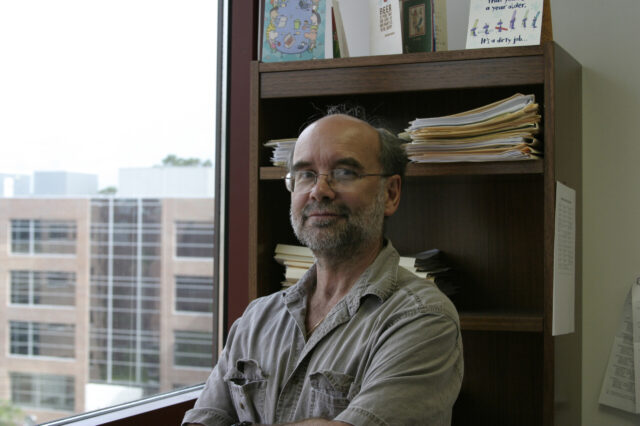Virus-drug combination shows improved effectiveness against brain tumor cells

A rabbit virus currently being developed for cancer therapy can be paired with one of several existing drugs to deliver a more potent punch to a deadly type of brain tumor cell, researchers have found.
A group that includes a University of Florida Health virus expert has identified six compounds that make brain tumor-initiating cells more sensitive to treatment with the virus. The findings, published recently in the journal Neuro-Oncology, show that the combination of a drug and the myxoma virus gives better anti-cancer results against glioblastoma, the most common type of brain tumor.
The myxoma virus, found in wild rabbits that live in Australia and parts of Europe, has some effectiveness against the cells that cause glioblastoma tumors to recur in humans. There is no effective long-term treatment for glioblastoma. Patients usually live 12 to15 months after diagnosis, according to the National Cancer Institute.
Pairing the virus with the drug rapamycin was already known to be modestly effective against brain tumor-initiating cells, said Peter Forsyth, M.D., the study’s principal investigator and chairman of the neuro-oncology department at Moffitt Cancer Center in Tampa. Still, there was room for improvement. So Forsyth teamed up with a group that included Grant McFadden, Ph.D., a myxoma virus expert, a professor in the UF College of Medicine’s department of molecular genetics and microbiology and a UF Genetics Institute faculty member.
“We want to make a difference with patients. One of the ways we can do that is by repurposing drugs, which holds a lot of promise,” Forsyth said.
The myxoma virus needs help to reach its peak effectiveness against brain tumor-initiating cells, which can put up a fight against the virus that’s trying to kill them.
“Brain tumor-initiating cells are not as susceptible as you would like them to be,” Forsyth said.
Researchers had previously stumbled on rapamycin, finding that it gave the myxoma virus a boost, McFadden said. Still, they didn’t know if rapamycin was the best drug to match with the virus. That’s when Forsyth got the idea to screen 73 compounds that are in various stages of clinical development.
During testing on the rare, primitive cells that initiate brain tumor growth, researchers got a surprise: Three compounds that had never before been shown to effectively interact with a cancer-killing virus actually had the best synergy. When paired with the virus, those drugs — axitinib, rofecoxib and
premetrexed — reduced the viability of tumor-initiating cells by 20 percent or more compared with using just the virus alone, researchers found.
Axitinib, which already has U.S. Food and Drug Administration approval as a treatment for kidney cancer, was the most effective against a range of cancer cells: It significantly increased cell death when tested on four different cell lines, researchers found. Axitinib is particularly interesting because it is already in phase 2 clinical trials for use on tumors known as gliomas that start in the brain and spine, the researchers noted.
The research did not determine the exact mechanics of the virus-drug interaction but noted that several of the tested compounds target a particular signaling pathway that is known to promote cancer cell growth and survival. Blocking that pathway before the virus is introduced may be a crucial step in killing off the cancer cells, according to the researchers.
The latest findings are an important first step in identifying drug-virus combinations that can be part of a multifaceted approach to treatments that use cancer-killing viruses, the researchers wrote.
McFadden said the next research step may involve taking the most effective compounds, combining them with the virus and studying their effectiveness in animal models.
“It’s clearly true that viruses will be just one of the elements in the new repertoire of treatments for brain cancer in the future,” McFadden said.
Funding for the research came from the V Foundation for Cancer Research and the Terry Fox Foundation. The work involving McFadden’s laboratory was funded by two National Institutes of Health grants (R01 AI080607 and R01 CA138541).
About the author
